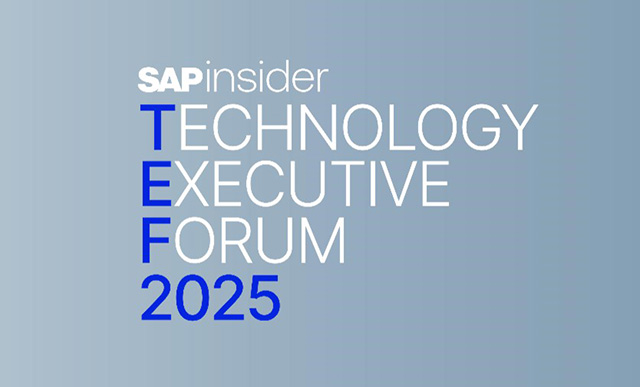Why An SAP S/4HANA Transformation Starts with People, Not Platforms
Meet the Authors
Key Takeaways
Prioritize organizational alignment and engagement to ensure the success of the SAP S/4HANA transformation. Involving stakeholders from all levels is crucial for defining strategic goals and understanding operational pain points.
Adopt a phased approach to migration rather than a monolithic project. Breaking down the transformation into manageable phases can de-risk the project and generate early savings that can fund subsequent steps.
Align the business case for the transformation with current market realities and operational needs. This includes redefining capabilities to address modern challenges, such as supporting new revenue models and enhancing analytics.
The pressure to migrate from SAP ECC to SAP S/4HANA is intensifying for many organizations as the 2027 deadline approaches. The move to SAP S/4HANA is a business transformation with numerous choices, including cloud versus on-premises, options for RISE with SAP – Private Cloud Edition and Public Cloud, options for execution of transformation like one-step versus two-step migration based on the starting point for the customer. So, where should SAP Customers begin their journey?
During a recent SAPinsider webinar, Bimal Soni, SVP of ERP Modernization at Resolve Tech Solutions (RTS), noted that the answer isn’t in a server room or a software license agreement. It’s in the conference room.
The Most Overlooked Aspect
With over two decades of SAP experience spanning roles from end-user to CIO, Soni has seen transformations succeed and fail. He argued that organizational alignment and engagement throughout the transformation journey are the most critical success factors during a digital transformation, but it is often the most neglected one. He explained that when executive goals don’t permeate throughout the organization, projects suffer from misaligned priorities, cost overruns, and a failure to realize true business value.
Explore related questions
A successful transformation requires establishing a dedicated team comprising stakeholders from every level. According to Soni, they should include executives defining the strategic why, division managers translating that into departmental goals, and the SMEs and end-users who understand the day-to-day process pain points for modernizing and improving processes to increase operational efficiency. “It’s about creating a unified vision before a single line of code is configured,” he said.
Creating Business Value
The business embarks on the ERP Transformation journey from SAP ECC to SAP S/4HANA without looking into new industry trends, digital business models, products and services, the company’s growth strategy, or actionable insights via analytics or productivity via RPA, AI, ML. That, according to Soni, is a missed opportunity. The real value lies in rethinking how the organization operates. Soni encouraged leaders to ask a fundamental question: “What is the business value for us, and how has business transformed since ERP was originally implemented? What new capabilities do we need to run and grow the business efficiently and world class customer experience.”
He added, “Perhaps your company, like many tech firms, has shifted from a one-time CapEx sales model to a recurring subscription-based revenue model. This fundamentally changes everything from sales, to fulfillment, to revenue recognition, and even sales compensations. Or maybe your supply chain needs to support a direct-to-consumer e-commerce channel, demanding advanced returns management capabilities that your old ERP can’t handle very efficiently currently.”
Identifying these value drivers, whether it’s enabling global growth, improving the customer experience, or providing real-time analytics for faster decision-making, turns the project from a mandatory technical chore into a strategic business enabler.
Breaking Down an Overwhelming Journey
Once the vision is aligned and the value is defined, the path forward becomes clearer. The sheer scale of migration can feel paralyzing, but it doesn’t have to be a single, monolithic project.
“This journey can be broken down into multiple phases,” Soni advised. “In fact, the business value realization and the ability to deliver the milestones on time will be better if this journey is planned and executed in multiple phases.”
For one RTS client, this meant first moving its SAP ECC instance to a hyperscaler to escape an end-of-life hardware situation. Soni noted that studies have shown these initial steps have generated savings between 30-40% in IT infrastructure costs, creating a budget and momentum for the subsequent SAP S/4HANA transformation. “This phased approach de-risks the project, allows the organization to absorb change at a manageable pace, and delivers value along the way,” he said.
Soni concluded, “At Resolve Tech Solutions, we guide our partners through this entire process, starting with a current-state assessment that focuses on aligning your people, processes, and platform goals. By building this solid foundation, your SAP S/4HANA transformation becomes less of a daunting leap and more of a strategic, value-driven journey.”
Watch the on-demand SAPinsider webinar to learn more.
What This Means for SAPinsiders
Prioritize people over the platform. Don’t assume business and IT goals are in sync. Proactively build a transformation team with stakeholders from the executive suite down to the end-users before designing the solution. As Soni emphasized, this is the “most overlooked aspect” that ultimately determines the organization’s business value realization from its ERP modernization investments.
You don’t have to do it all at once: The transformation to SAP S/4HANA can be broken down into manageable, value-driven phases. Consider a two-step approach, such as migrating to a hyperscaler first to resolve immediate hardware risks and generate cost savings that can help fund the main project. A phased journey leads to better business value realization and the ability to deliver the milestones on time.
Anchor your business case in today’s reality: Business has changed dramatically since SAP ECC was first implemented. Frame the business case around the new capabilities SAP S/4HANA unlocks to solve today’s challenges, whether it’s supporting a new subscription revenue model, enabling advanced analytics, or improving user productivity with a modern UI.







